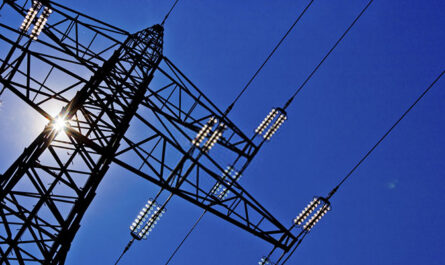Overview of Solar Photovoltaic Glass Technology
Solar photovoltaic (PV) glass utilizes thin-film solar cells installed between two glass panes to generate electricity from sunlight. The solar cells are made from semiconductor materials like cadmium telluride or amorphous silicon. When exposed to sunlight, the solar cells create an electric field across the semiconductor, causing electrons to flow and produce a voltage and current. Multiple solar cells are interconnected to increase voltage and power. Wires embedded between the panes transfer the electricity produced to supply power for a building or be fed into an electrical grid.
Advantages of Building-Integrated Photovoltaics
One major advantage of solar PV glass is it can be easily integrated into existing buildings. The solar panels replace standard glass windows, walls, or skylights without requiring additional roof space. This is referred to as building-integrated Solar Photovoltaic Glass (BIPV). BIPV systems help buildings become partially or even fully self-powered from their own clean electricity production. They also improve a building’s energy balance by lowering its consumption through the self-generated solar power. Further, BIPV systems provide aesthetic benefits by serving dual purposes as architectural elements and power sources. The use of transparent or translucent solar panels keeps the exterior look of buildings intact while harvesting solar power.
Applications of Solar Energy Glass in Commercial Construction
Solar PV glass is being increasingly adopted in commercial construction projects where large glass surfaces are commonly used. Office buildings, shopping malls, airports, and parking garages have started incorporating BIPV systems in their designs. For example, the new Terminal 3 of Barajas Airport in Madrid features amorphous silicon solar panels integrated into the envelope to supply 35% of its total energy demand. Similarly, a parking garage in California is covered entirely with solar panels delivering enough electricity to power its daily operations. Numerous skyscrapers worldwide now feature semi-transparent solar panels installed as sunshades or curtain wall panels. Some forward-thinking developers have even designed entire zero-energy commercial parks with roof and wall PV integrated throughout the development.
Use of Electricity-Generating Glass in Residential Buildings
While commercial structures were earlier adopters, the residential sector is also witnessing a rise in PV glass installations. Solar panels are often used as shading devices on sun-facing windows of homes to reduce cooling loads. Manufacturers offer PV window and skylight products that replace standard components. The electric current generated is either directly used by the house or transmitted to the public grid. Some housing projects have taken the concept further by adopting PV panels as exterior walls. An eco-friendly development in New York incorporates light-transmitting triple-glazed units generating 10% of a unit’s annual consumption. Tests reveal how just installing PV windows in new homes can provide 25-50% of their power needs, making solar more accessible even for households.
Emerging Daylight Harvesting Photovoltaics
Research is paving the way for advanced daylight harvesting PV technologies that can gainfully utilize both artificial and natural light. Perovskite solar cells show promise as they can work efficiently even in weak indoor lighting conditions. Companies are developing dimmable PV coated glass windows tailored for offices, schools, and healthcare facilities. During the day, they generate electricity from strong outdoor illumination while allowing modulated natural lighting. At low light hours, the windows operate as power sources harnessing indoor electrical and ambient light. They adjust power production based on available light levels and switch to power generating mode even after sunset using minimal indoor lighting. Such developments broaden solar’s use in a 24/7 working environment without compromising visual and thermal comfort.
Green Building Standards Incentivizing PV Glass
Major green building certification programs like LEED and BREAAM have started promoting the use of BIPV to encourage sustainable practices in construction. Their latest standards offer prerequisites and credits for adopting daylighting and on-site renewable solutions. This provides the necessary impetus for developers, architects, and engineers to embrace PV glass in designs. Projects incorporating on-site PV generation enjoy streamlined approvals under the fast track certification processes. Various nations too support BIPV through financial policies like renewable portfolio standards, feed-in tariffs, tax rebates, and net metering reimbursements accelerating mainstream adoption. Stringent regulations on building emissions and energy-efficiency further make solar photovoltaic glass an attractive prospect for new builds and upgrades.
Cost Competitiveness Driving Widespread Commercialization
While upfront capital costs of BIPV remain higher than conventional construction materials currently, continuous technology advancement and mass production are lowering price tags. Investors are gaining confidence in the long-term returns as electricity from solar windows offsets operational expenses over decades. Sizable R&D funding has led to efficiency boosts reducing manufacturing costs. As economies of scale take effect, prices of PV windows are projected to match regular double glazing by 2025. By then, the payback period may fall to just 5 years or less in regions with strong solar resources. With new photovoltaic materials and integration expertise, prices will likely be driven down further. As building-scale solar panels and windows become more competitive on installation and lifecycle cost, their market potential goes up multifold benefiting owners, builders, and the entire construction supply chain.
*Note:
1. Source: Coherent Market Insights, Public Source, Desk Research
2. We have leveraged AI tools to mine information and compile it.



